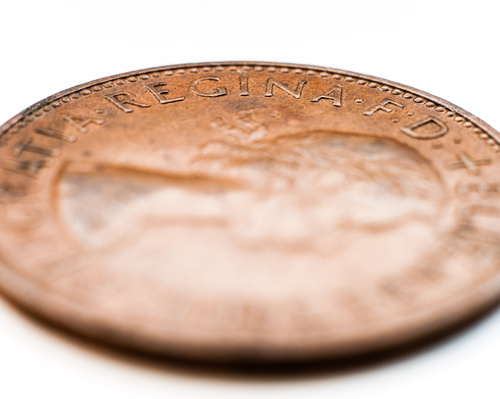This is the first in an occasional series about ridiculously cheap photography equipment, typically of the “slow boat from Hong Kong” persuasion.

The JYC Fotomate LP-01 Macro-Turning Long-Type Tripod Head is a single-axis macro focusing rail with 10 cm (4 inches) of travel, currently selling for $13.60 shipped from Hong Kong.
Although the official name of this device has “Tripod Head” in it, that’s not really accurate. It’s designed to go between a real tripod head and your camera. It has a 1/4”-20 socket on the bottom to connect to your tripod head, and a pair of 1/4-20” bolts to attach your camera (and, I suppose, a flash bracket or other accessory at the same time).
Once the rig is set up, you can use a knob on the macro rail to move the camera forward or backward along the lens axis (that is, closer or farther away from the subject). That makes macro photography easier for a few reasons. First, if you’re after the highest possible magnification (or a specific magnification ratio), you can set the lens focus to that position, and use the rail to adjust the camera position to bring the subject into focus at that magnification. Or if you’re trying to figure out the best composition, you can adjust both the camera position and focus to find a combination that gives you an appealing magnification with the subject in focus. Without a focusing rail, you’d have to physically move your tripod forward and backward, which is a coarse and unwieldy adjustment. Finally, adjusting the position using a focusing rail is usually a little more precise than adjusting the focus helical on the lens, especially on a lens with quick focus travel. It’s a little easier to get it set just right.
My macro rail arrived in Pennsylvania about 3½ weeks after ordering. It was packaged in an easy-to-open plastic blister pack and shipped in a bubble envelope. On initial examination, I found it to have a distinctive cutting-oil aroma that reminded me of the cheap tools from Harbor Freight. The rack-and-pinion seemed a little sloppy and imprecise, but the locking knob seemed to lock it down firmly. The two tripod screws are captive. A cosmetic cover (shiny plastic disc) at the end of one knob fell out repeatedly.
I don’t have a proper macro lens for my Pentax K-7 yet. My choices are a Pentax A 28 f/2.8 or FA 50 f/1.4 with cheapass extension tubes, or a Tamron AF 70–300mm f/4.0-5.6 Di LD zoom lens that goes to 1:2 macro between 200–300 mm. I decided to try the rail with the FA 50/1.4 and tubes. I used the #1 and #2 tubes, which with the lens and body mounts provide about 35 mm of extension. I attached the camera to the rail, put an Arca-type plate on the rail, and mounted the assembly on my Vanguard ABH-340L ballhead.
The slotted screw on the rail provides a good range of mounting positions. You can get the center of mass of the camera and lens in the middle of the rail, for good balance. Or, if necessary, you can move the camera toward one end to get it out in front of the tripod, if necessary to get closer to your subject.
For my subject, I chose a 1963 penny from the United Kingdom. This coin, which is larger than a US quarter, was a lucky charm I carried on my wedding day; it has my Spousal Unit’s name on it. I photographed it on a window sill, and used white paper as a background and to diffuse the direct sunlight. Because I had to get the tripod up against the wall, I positioned the camera toward one end of the macro rail to get closer to the window sill.
In use, the performance of the macro rail was adequate—and a big improvement over trying to get the same shot with no rail. With the camera pointed moderately downward, the rail had a tendency to lurch forward a bit when I unlocked it. There was also a bit of a “runaway train” sensation when adjusting the rail position. It felt a bit like it was getting away from me, although I don’t think it actually would with this amount of weight. Focusing in Live View using the rail was straightforward, and sufficiently precise even at large apertures.
Unfortunately, the camera moves upward perceptibly when the locking knob is tightened, messing up a careful composition. I found that I was able to leave the rail unlocked to avoid this problem, but that may not be stable enough in certain orientations, or in the wind. I did not observe a fore/aft shift (i.e. focus shift) when locking the rail, so that’s good.
The metal knobs are well-knurled and easy enough to turn, though larger, rubberized knobs would be more comfortable, and probably give less of the “runaway train” sensation. The knobs are also somewhat difficult to reach when the camera is directly over them.
Overall, my initial impression is that people who are really into macro photography should probably look into a better macro rail (maybe hope for a nice one from the 60s to show up at the thrift store). But for the occasional macro shooter who wouldn’t otherwise invest in a rail, this is a steal at $13.60. Other variations, including longer and two-axis models, are available, though I would imagine that any handling imperfections are magnified in those versions.
Your purchases through my Amazon links help me buy more crap.

No comments:
Post a Comment
Note: Only a member of this blog may post a comment.